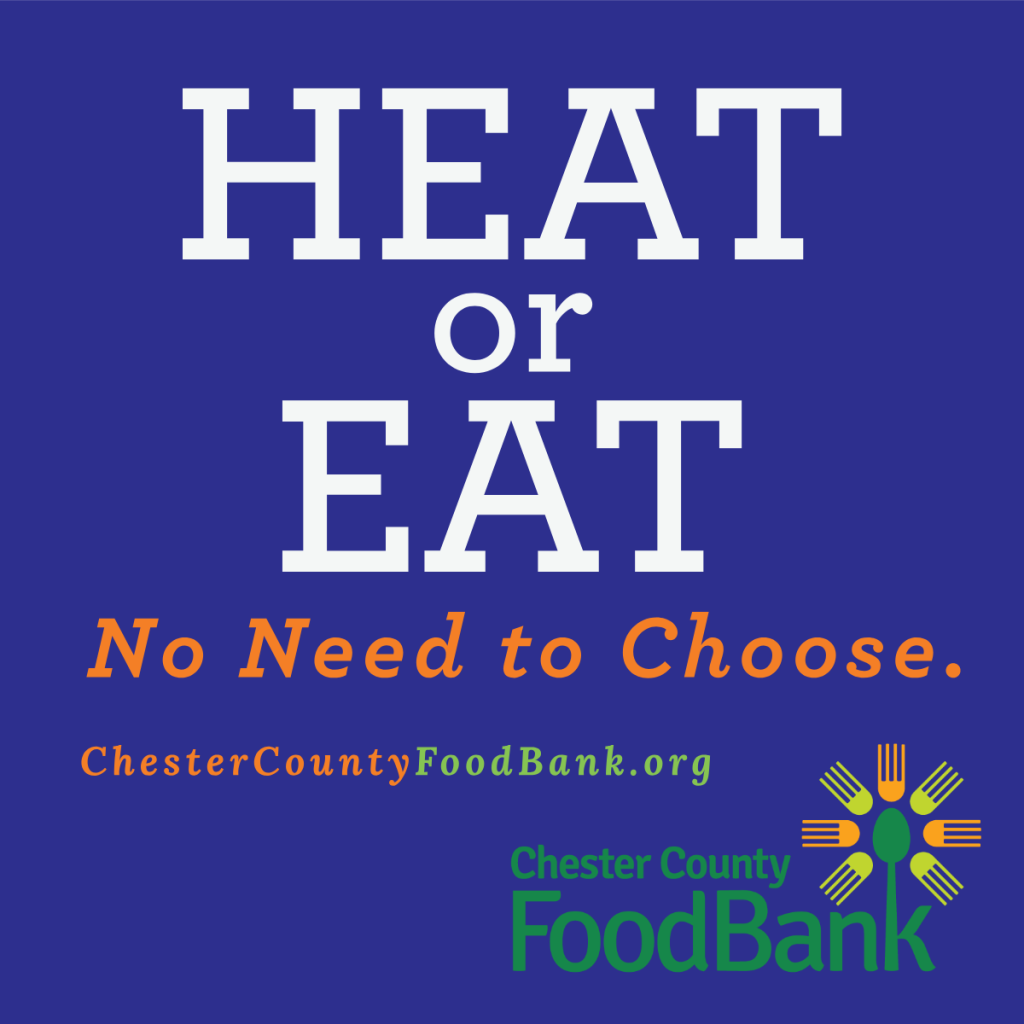“Heat or Eat”: Some Neighbors Have to Make This Difficult Choice

The first days of January have been mild, but as Pennsylvanians, we know that the blustery days of winter are still ahead. Unfortunately, as the chill of winter blasts through the hills and towns of Chester County, our communities are still in desperate need. Hunger knows no season.
Those less fortunate still require heat and hot water and other social services, in addition to food. The rising costs of many basic necessities, especially groceries, continue to affect individuals and families who may have never experienced food insecurity. People in our community may have to decide whether to pay a utility bill or cut drastically into their food supply. Heat or Eat… what would you choose?
Government assistance isn’t always an option. Household income generally must be at or below 200 percent of the poverty line. For a family of four for the federal fiscal year 2023-2024, that’s $5,000 a month or less to qualify for the Supplemental Nutrition Assistance Program (SNAP) (formerly known as food stamps). This is where we help. There is no need to choose between paying for heat or choosing to eat. Our neighbors depend on food assistance from CCFB and its network of hunger-relief partners to make ends meet all year long.
You can help by donating in one (or more) ways. Your donations are always welcome and valuable to the Chester County Food Bank, and we appreciate everything you do all year long.
- Food Donations: Take advantage of winter sales at local supermarkets. Picking up a few extra non-perishables while shopping for yourself or your family is an easy way to be involved with little effort. Food donations can be dropped off at CCFB Monday – Friday 8a-4:30p. Get your neighborhood or organization involved and host a larger food drive. Check out our toolkit for resources to get started.
- Virtual Food Drives & Fundraisers: With many businesses now working remotely or hybrid, hosting a virtual food drive or fundraiser is a great way to keep people connected. Get set up in minutes, and you’ll create a unique web link to share with your group to start fundraising.
- Volunteer: Join other members of our community or organize a group volunteer event to sort, pack and help with food distribution indoors. Sign up here.
- Monetary donations. A simple click here will send your donation directly to us, where 83 percent of all monetary donations go directly to program costs. Make an impact all year and join Beyond Hunger 365, our community of monthly donors. Any amount makes an impact.

Join other donors and help us continue our mission to mobilize the community to ensure access to real, healthy food.
The Chester County Food Bank is the central hunger relief organization serving more than 160 food cupboards, meal sites, and social service organizations throughout Chester County. We take a steadfast approach to provide food and build support in the neediest communities while raising awareness and engagement among our community.
Editor’s Note: This post was originally published in February 2017 and has been updated for accuracy and comprehensiveness.